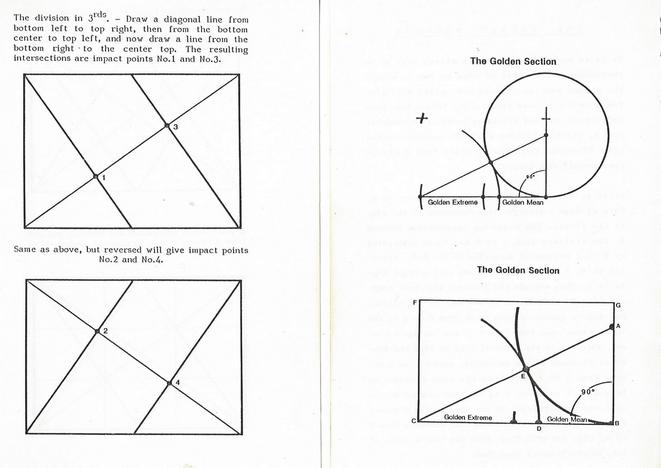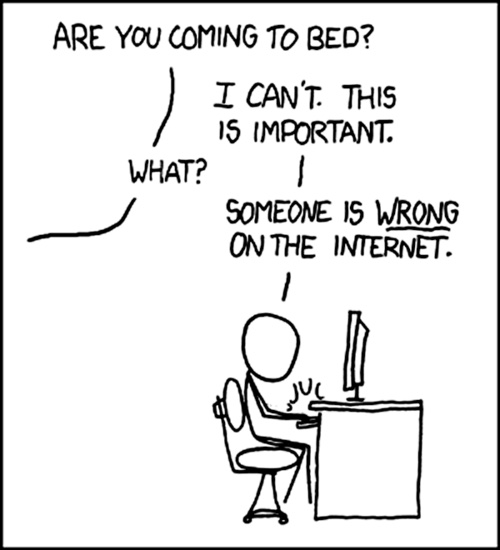picture vs photograph
Jun 23, 2023 18:53:19 #
Jun 23, 2023 20:47:36 #
JohnSwanda wrote:
I think you are confusing them with your definitions. A picture can be a photograph, a drawing, a painting, a lithograph, etc. A photograph is just one type of picture.
Exactly! That is, the word "picture" is both a generic term and a conceptual term relating to the visualization of an object (or even an idea, etc.), whereas by definition, the word "photograph" refers to a physical, definitive type of picture. Compare the terms "picture" vs. photograph with the terms "home" vs. "house." "Home" is a generic term and can include a house, a condominium, an apartment, a trailer (aka mobile home), even a tent or the street if that is where one considers their home. A "house," however, is but one physical type of home.
Jun 23, 2023 20:51:28 #
BigOldArt wrote:
Any student should learn etymology, word origins, usage, and precise definitions in ENGLISH and any other class. Those things help them situate what you are trying to communicate in their general understanding.
Of course, I have to agree, however, the OP is not, as far as I know, conducting a course of study. He is tasked with the job of introducing youngsters to the finer points of photography on a, perhaps one-time occasion. The issue as I see it, is that dwelling on words that are basically synonymous and splitting hairs that do not exist is counterproductive and may cause confusion.
The real technical and artistic terminology pertaining to composition can be somewhat more complex
and if anything is described, detected, discussed, or defined it should be those elements, not assigning words to differentiate levels of quality in photographic art or science that are arbitrary and possibly the product of snobbishness.
Yes, there are well-crafted and poorly-crafted photographs and in some cases, even those descriptions are subjective. Whatever the case may be, placing a more sophistica name on a bad picture will not improve it, and calling a masterpiece a more common term will not degrade it.
I have to admit that I haven't any formal training in pedagogy and my technical writing leaves a lot to be desired. I draw on my teaching methodology from life- I was once a kid in junior high school and I know what inspired me and my cohorts, and what did not. I have successfully trained and taught many young photograhers. I learned never to underestimate kids. The ones who have scientific inclinations will learn the terminology faster than I can dish it out. The ones with artistic talent will exercise and develop their creative leanings once they learn the tools and technology.
The attached diagrams are just a few of the visual aids I use to explain certain elements of composition. Is this "geometry" appealing to many pre-adolescents in an extracurricular activity- I think not! At least as a precursor to further study. The first step in learning this kind of stuff is encouraging enthusiasm and generating interest. The technobabble will come in copious volumes and quantities.

Jun 23, 2023 20:52:15 #
I forgot to add, a "photograph" is always a "picture" but a "picture" is not necessarily a "photograph."
Jun 23, 2023 23:32:26 #
Jun 24, 2023 00:01:41 #
hj wrote:
The terms are interchangeable. I'm tired of splitting hairs on words.
Some hogs:

Jun 24, 2023 00:12:50 #
RodeoMan
Loc: St Joseph, Missouri
Here is an idea. Bring to your class, if you could find one, a rather poorly executed snapshot of a young man or woman and also a professional quality portrait of a young man or woman. Discuss the good points of the portrait and the short-comings of the snapshot. Ask the students which image they would rather have hanging on their wall. Then after that discussion, ask them to imagine that the young man or woman in the photograph was their older brother or sister who lost their lives in the service of their country and this snapshot is about the only image available of them. I was going to say their mom or dad, but this might be too painful for some. Then ask them which they would prefer; the perfect portrait of the stranger or the crummy snapshot of a loved one.
Suggest to them that they, and you, want to end up with images that mean something to each of you. Then you will tell them that you will help them explore ways to "elevate" their snapshots to photographs. If you only have one class, I would have examples showing the "poor" and the "better"; such as a photograph of someone whose image is too dark because they are standing in front of a window and then suggestions and examples of how to fix this. There are any number of subjects that could be discussed. In all of this, the more the kids are involved--the better.
Suggest to them that they, and you, want to end up with images that mean something to each of you. Then you will tell them that you will help them explore ways to "elevate" their snapshots to photographs. If you only have one class, I would have examples showing the "poor" and the "better"; such as a photograph of someone whose image is too dark because they are standing in front of a window and then suggestions and examples of how to fix this. There are any number of subjects that could be discussed. In all of this, the more the kids are involved--the better.
Jun 24, 2023 00:24:47 #
Timmers wrote:
A picture is a creation made by means of artistic ... (show quote)
As an ex-1980s AV producer of many multi-image* slide shows, I beg to differ:
> An UNMOUNTED positive film image is a transparency. If it is in a slide mount, the transparency is referred to as a slide.
> Slides go into slide projectors and slide viewers.
> Unmounted transparencies typically get duplicated or scanned, or discarded because they are unworthy of mounting, duplicating, or scanning.
*Multi-Image was the simultaneous projection of multiple slide images in synchronization with a soundtrack. No one does it now, because digital video has replaced it. But it was a really powerful tool for corporate communications and other presentation needs. The CIA used it. The Miami police department used it for training simulations. Museums built exhibits with it. We used it for training and sales motivation, and to generate excitement about our company and its products. It could create a spectacle accompanied by high fidelity music, narration, and sound effects, in both large and small theaters and hotel ballrooms. When you put words, images and music together, something magical can happen. These days it's mostly done with video, but it's called "film," in honor of the medium that reigned supreme in the entertainment industry for a century.
In our studio, we only mounted the transparencies we wished to keep and project, duplicate, or scan. We used a variety of paper, plastic, and glass mounts, depending upon the end use. All slides projected in multi-image shows were in glass pin-registered mounts, so slides in multiple projectors could be projected on top of one another for titles, insets, animation, and other effects. We often used three, six, or twelve projectors on one screen area.
There once was a small industry dedicated to producing 2- to 30-projector slide shows for corporate meetings, events, workshops, museums, etc. We even had our own International Association for Multi-Image, which had summer conventions in major cities and winter conventions at NAVA/ICIA trade shows, and later, COMMTEX trade shows. NAVA/ICIA and COMMTEX were large AV industry trade shows encompassing a broader array of applied technologies, most of which were for the education market and churches. There were many small companies making computerized projector control systems, screens, slide production camera gear, slide mounts, racks for projectors, cases to transport equipment, etc. Kodak and Elmo made pro-grade 35mm slide projectors for our industry. It was a heady time for some of us. It started in the late 1960s, and wound down in the early 1990s. Peak multi-image was 1977 to 1990. PowerPoint, digital video projectors, and digital video killed it off. The technology is dead, but the techniques live on, in film, in TV commercials, on YouTube, and in similar venues.
Jun 24, 2023 00:29:04 #
Jun 24, 2023 01:06:37 #
Jun 24, 2023 04:26:19 #
delder
Loc: Maryland
burkphoto wrote:
As an ex-1980s AV producer of many multi-image* sl... (show quote)
I worked for a company, Telemation East, that designed, built and installed those Mulimedia Systems in the D C. Area. Rear Screen Protector walls, the required MINIMUM 2 Carousel Projectors, a 16 MM Bell & Howell, sometimes a DuKane Automatic Fillm Strip Protector and a Fairchild Forum for the Audio pickup. Electromechanical wonders of the 70's!
Jun 24, 2023 05:01:53 #
imagextrordinair
Loc: Halden, Norway
Ruraldi wrote:
I'm doing a presentation for junior high children ... (show quote)
I think it would be best if those most enlightened, post an example of a photograph vs a picture...
Intention I believe is the key.
Anyone can take a picture (a frozen moment in time) with anything from a Kodak "Brownie" to a Hasselblad XD2. The label of Photograph may be an "intention" or acclimation" one wants to have put on their image because of the effort put forth for composition, personal use of forethought, and use of ones technical skill.
The argument may be where the line is drawn in the sand by a photographer, Where does their "Photograph" becomes superior to the average Joe's "picture"? ... cell phones are blurring that line more and more every day
Jun 24, 2023 05:56:28 #
Ruraldi wrote:
I'm doing a presentation for junior high children ... (show quote)
pho·to·graph
noun
a picture made using a camera, in which an image is focused onto film or other light-sensitive material and then made visible and permanent by chemical treatment, or stored digitally.
"a photograph of her father"
pic·ture
noun
a painting or drawing.
"draw a picture of a tree"
Not realy up for interpretation.
Jun 24, 2023 05:58:06 #
PoppieJ wrote:
Composition doesn’t have to be about photography. It is about how things relate to tell the story you are trying to get across. If it were a music class then it is about the notes and how they relate to each other and what the composer wants to get across “mood” if you will. So composition is really about different elements of whatever medium and how the come across to the audience to tell the story

Jun 24, 2023 05:59:09 #
If you want to reply, then register here. Registration is free and your account is created instantly, so you can post right away.



